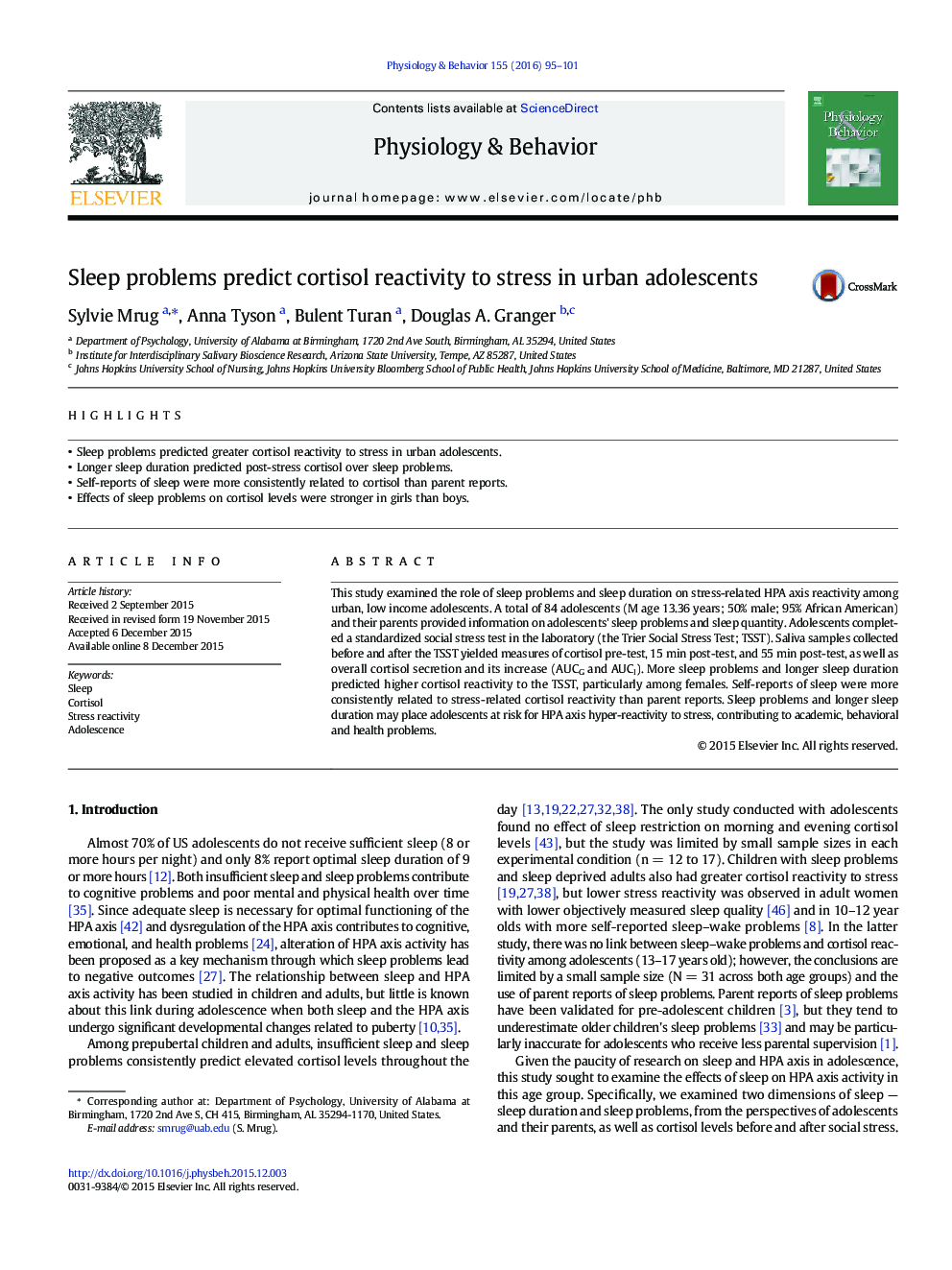| Article ID | Journal | Published Year | Pages | File Type |
|---|---|---|---|---|
| 2843974 | Physiology & Behavior | 2016 | 7 Pages |
•Sleep problems predicted greater cortisol reactivity to stress in urban adolescents.•Longer sleep duration predicted post-stress cortisol over sleep problems.•Self-reports of sleep were more consistently related to cortisol than parent reports.•Effects of sleep problems on cortisol levels were stronger in girls than boys.
This study examined the role of sleep problems and sleep duration on stress-related HPA axis reactivity among urban, low income adolescents. A total of 84 adolescents (M age 13.36 years; 50% male; 95% African American) and their parents provided information on adolescents' sleep problems and sleep quantity. Adolescents completed a standardized social stress test in the laboratory (the Trier Social Stress Test; TSST). Saliva samples collected before and after the TSST yielded measures of cortisol pre-test, 15 min post-test, and 55 min post-test, as well as overall cortisol secretion and its increase (AUCG and AUCI). More sleep problems and longer sleep duration predicted higher cortisol reactivity to the TSST, particularly among females. Self-reports of sleep were more consistently related to stress-related cortisol reactivity than parent reports. Sleep problems and longer sleep duration may place adolescents at risk for HPA axis hyper-reactivity to stress, contributing to academic, behavioral and health problems.
